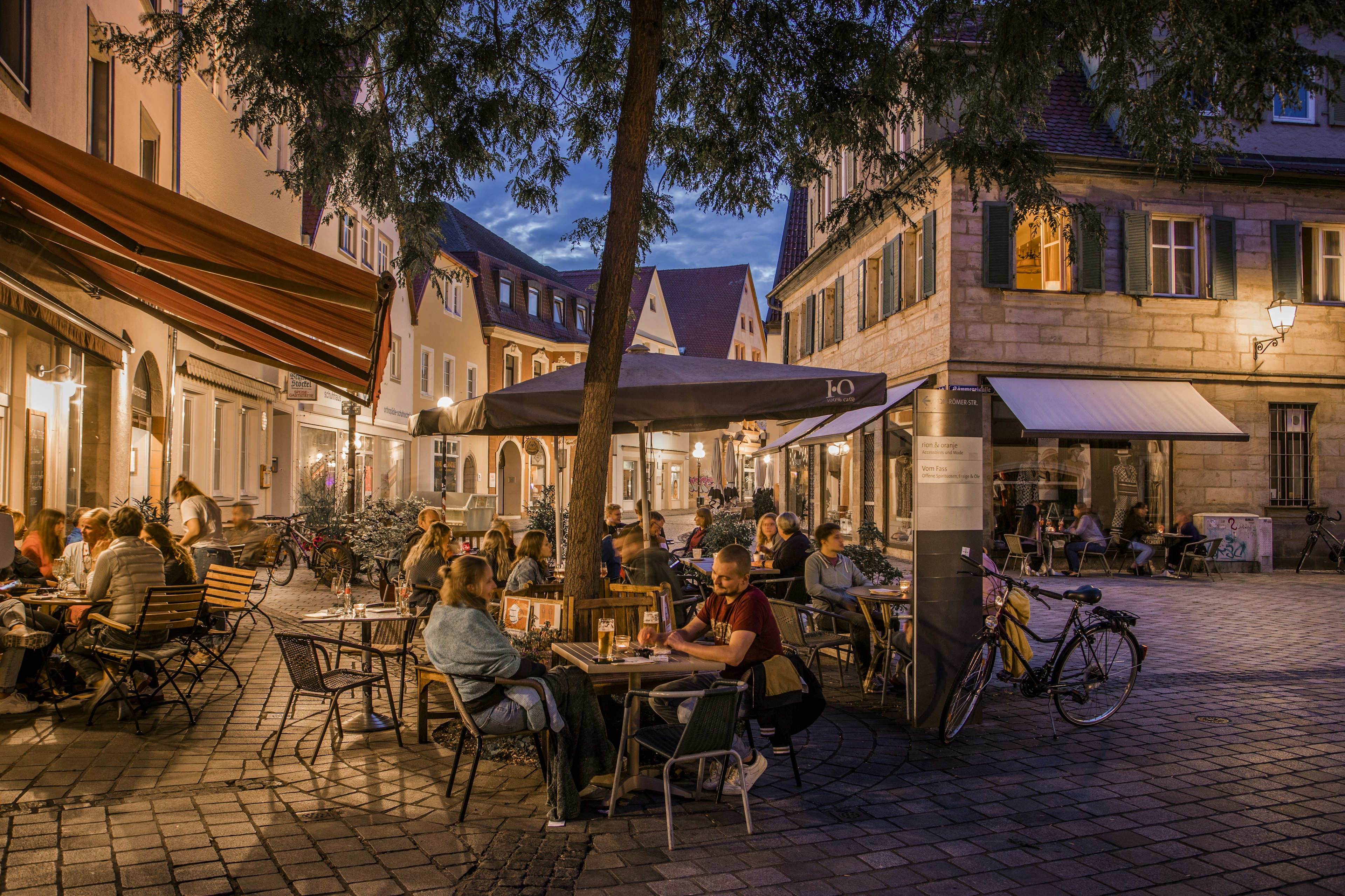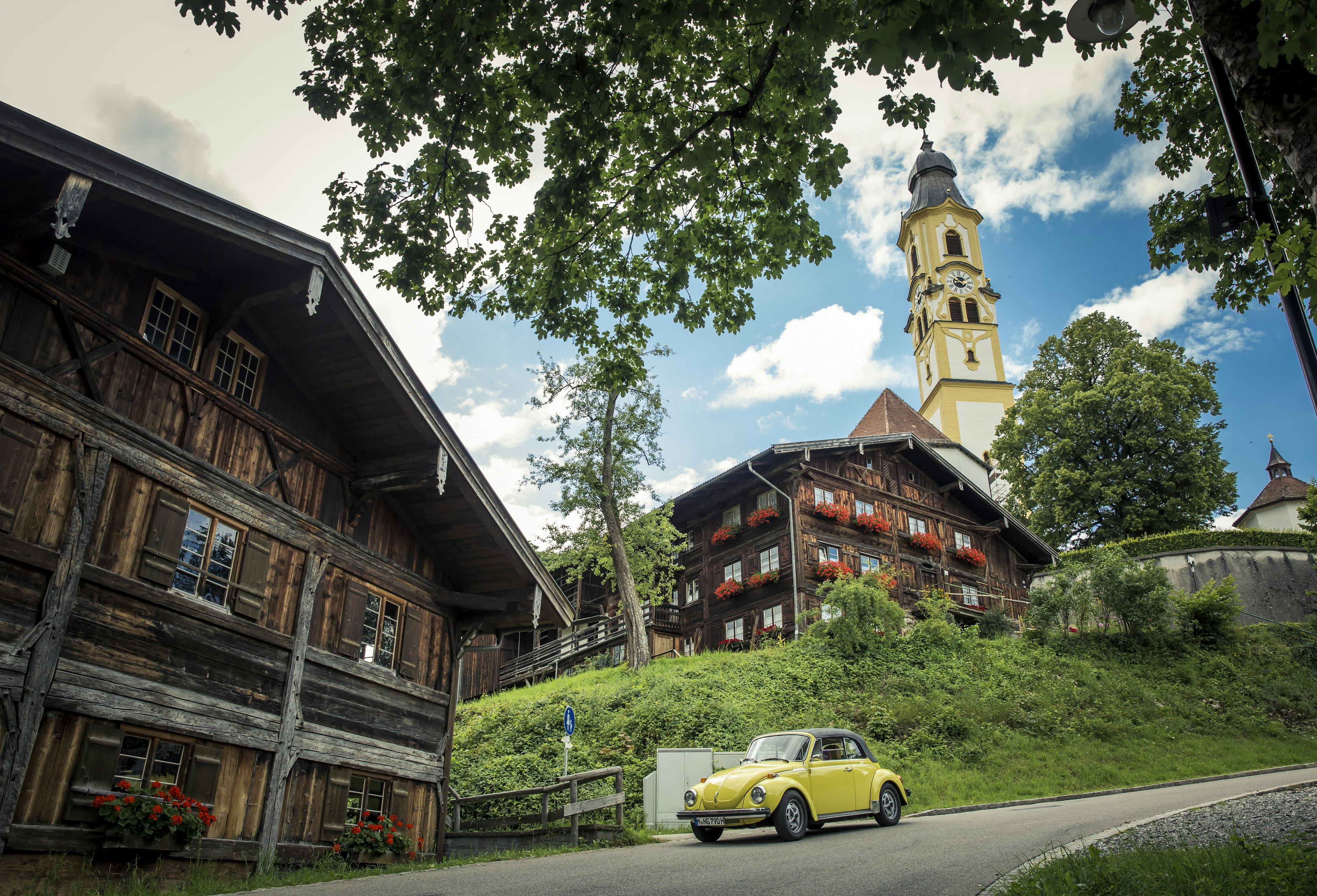Bavaria’s stunning landscapes, deep-rooted
traditions, wealth of cultural monuments and diverse UNESCO World Heritage
sites make it a must-visit destination in Germany. You can head to famous
landmarks, breathtaking national parks, captivating castles and buzzing cities,
before discovering lakeside retreats, ornate palaces, family-run vineyards,
lesser-known towns and, of course, plenty of beer.
Bavaria is also a haven for adventure seekers,
with its turquoise lakes perfect for wild swimming and water sports, and high
peaks made for epic hikes and ski days. Celebrating its 75th anniversary in
2025, the scenicRomantic Road (Romantische Strasse) winds through the state and provides a good
introduction to key people, places and periods in Bavaria’s fascinating
history.
Travel along the iconic Romantic Road
Next year marks the 75th
anniversary of theRomantic Road, a well-traveled holiday
route which traverses the Bavarian countryside and connects some of the state’s
finest locations and landmarks.
The northern terminus isWürzburg, a city known for its bold Baroque
architecture, in particular the UNESCO-listedWürzburg Residenz built
in the 18th century to house the city’s prince-bishops. There’s also
an imposing fortress,Festung Marienberg,
looking down on the steep vineyards and river below. The region’s cool climate
produces delicate Silvaner white wines known for their freshness, character and
distinctively shaped bottle – a Bocksbeutel.
For many, the most romantic stop along the
route is the fairy-tale town ofRothenburg ob der Tauber. Walk
the cobblestone lanes lined with jumbled half-timbered buildings and visit
sights such as the Gothic church of St Jakob. Fans of Christmas and handmade
German crafts should make a beeline for the flagship store ofKäthe Wohlfahrt, a company specializing
in decorations, nutcrackers and unique gifts. There’s aChristmas Museum here
too.

From here, the route heads towards the
picturesque town of Nördlingen, with its walkable medieval walls and
well-preserved old houses. Listen out for the night watchman calling out from
the tower of St George’s Church, a tradition that dates back to 1440. Continue
and you’ll arrive inAugsburg, Bavaria’s third largest city, home to theAugsburger Dom, thePerlachturm, an extensive network of
UNESCO-listed waterways and the world’s oldest social housing project still in
use, known as theFuggerei.

The route ends in the bustlingFüssen, a romantic town on the edge of the Alps with
a long tradition of stringed instrument making – especially violins. Most
people stop here to visit Bavaria’s most famous castles,Schloss Neuschwanstein, andSchloss Hohenschwangau, and
during the summer months the Forggensee reservoir, which offers stunning views
of the surrounding Alps, making it a popular destination for water sports.

Explore more of Franconia
The northern region of Franconia is home to
Bavaria’s vineyards and said to have the highest density of breweries in the
world, with hundreds of places making truly excellent beer. Hiking and biking
routes crisscross the region and connect different producers, while nature
parks, such as Franconian Switzerland, are dotted with small villages and tall
rock formations, some with old fortresses and castles perched on top.
The region also has plenty of towns and cities
to explore, including majesticNuremberg, a city that was
significantly rebuilt after the war to reflect its medieval might. Start at theKaiserburg, once one of the most
important imperial palaces in the Holy Roman Empire, before diving into some of
the different museums. Options include theAlbrecht-Dürer-Haus, home
to the great Renaissance painter from 1509 to 1528; theGermanisches Nationalmuseum,
spanning prehistory to the early 20th century; and theDeutsche Bahn Museum,
reflecting the importance of the city for Germany’s railways. You can also
visit theReichsparteitagsgelände, the
grounds where the National Socialists held rallies between 1933 to 1938. Many
of the huge structures, some never completed, still stand and provide an eerie
insight into the megalomania of the regime. While the Documentation Center is
undergoing renovations until 2025, an interim exhibition provides lots of
interesting detail.

Other gems in this region include
Aschaffenburg, with its red sandstone castle (Schloss Johannisburg) on
the river Main, and Coburg, home to one of Germany’s biggest medieval
fortresses,Veste Coburg – housing one of the
most important art and cultural history collections in Germany – and the
statelySchloss Ehrenburg where
Queen Victoria made several long visits. A little further south isBamberg with its UNESCO-listed old town. Highlights
here include theBamberger Dom, a masterpiece of
Romanesque and Gothic architecture, a collection of colorful cottages by the
river known asKlein Venedig (Little Venice) and the
elaborately frescoedAltes Rathaus, built on an artificial
island on the river Regnitz. Don’t leave without trying the local tipple, Rauchbier (smoked beer).
Finally, Bayreuth charms with its palaces and
parks, and impresses with the world-class acoustics at theFestspielhaus, the main venue of the
annual Wagner Festival. While this town is commonly associated with its former
resident composer, there were other influences on the cultural and musical
legacy too. In the 18th century, Margravine Wilhelmine, beloved
sister of Frederick the Great and wife of Margrave Friedrich von
Brandenburg-Bayreuth, redesigned and redeveloped much of Bayreuth,
commissioning structures such as theMarkgräfliches Opernhaus
(Margravial Opera House). The ornate theater was added to the UNESCO World
Heritage list in 2012.

See the different sides of Munich
Start in Bavaria’s biggest city, where the
clinking of heavy glasses and the clanging of brass bands fill jovial inns and
leafy beer gardens. While Lederhosen and beer halls are not unique to the city,
the combination with a contemporary urban lifestyle is.
Munich
has a vibrant and international energy – thanks in part to its lively student
population and ambitious young professionals – and a thriving cultural scene.
You’ll find classic museums and art venues, as well as cutting-edge spaces such
as the dynamicKunsthalle München,
with its changing exhibitions, and theMuseum of Urban and Contemporary Art,
which presents the works of diverse street artists in the first museum of its
kind in Germany. Sixty well-known street artists from across Europe have
created graffiti under the Donnersberg Bridge: one of the largest open-air
graffiti galleries in Europe.

Explore
districts such as the Glockenbachviertel and Maxvorstadt for busy bars, hip
stores and great restaurants, or head to a spot known asBahnwärter Thiel,
where small businesses, including a bakery, operate from old cargo containers.
Not far away isAlte Utting,
a passenger boat that has been converted into a bar, nightclub and music venue.
Sitting on top of a disused railway bridge, it makes a great spot for a
sundowner, with views over the surrounding neighborhood.
Take a break in theEnglischer Garten, a
vast public park commissioned by Elector Karl Theodor in 1789, which is now
full of joggers, cyclists, surfers and dog walkers, or head down to river Isar
for a beer by the banks. The Reichenbachbrücke kiosk only closes between five
and six in the morning! For a quieter green space, try Westpark, where outdoor
caféGans am Wasser
comes with a heated yurt next to a lake.

Discover unsung gems on the Danube
Flowing to the Black Sea, the Danube runs
through the south of Germany, passing a number of attractive not-to-miss places
like Neu-Ulm along the way. First up is laid-backRegensburg, the capital of the
Oberpfalz region. Dating back to Roman times, it is now one of the
best-preserved medieval cities in Germany, having been spared major damage
during WWII. Spanning the river is a restored 12th centurystone bridge, which served as the
only reliable crossing in Regensburg and the surrounding area for around 800
years.
Close by is the steep-sided Danube Gorge,
where small boats glide past towering limestone cliffs and thick forests in
this narrow section of water. On one bend is the large Weltenburg Abbey, a
Benedictine monastery founded in the year 600. Its brewery dates back to 1050,
but today uses modern equipment to produce its popular dark beer.
Further downstream, next to the Austrian
border, isPassau, sitting proudly on a narrow peninsula. Here
you can see the confluence of three rivers, the Danube, the Inn and the Ilz,
which historically brought wealth to the city. After devastating fires in the
17th century, much of the city was rebuilt by Italian architects,
who added strong Baroque influences to the medieval core.
The Bavarian Glass Route, which details the
region’s 700-year history of glassmaking and the iconic Schott Zwiesel wine
glass, also ends in Passau. Leading through the Upper Palatinate and Bavarian
Forest, it covers everything from glassblowing workshops and local artists, to
galleries and museums. In the town of Regen, you’ll find a small forest with
trees made of colored flat glass.

Drive the German Alpine Road
Skimming the southern edge of Bavaria and
passing through some of the state’s most epic scenery, the exhilarating German
Alpine Road is said to be the oldest touring route in the country. Covering more than 250 miles, it
begins inLindau onLake Constance and ends in Schönau amKönigssee.
There are several notable places to stop,
starting with Lindau itself. Located on an island close to the eastern shore,
the old town has multi-colored façades, stone arcades and a harbor entrance
guarded by a statue of a Bavarian lion and a white lighthouse opening to one of
the largest lakes in Europe. “Lindau” actually means “island where linden trees
grow” and has been documented since 882.

The route
then heads through the lush landscapes of Allgäu, passing castles, cattle and
monasteries, before eventually reaching the country’s highest mountain, theZugspitze. NearbyGarmisch-Partenkirchen makes
a good base for exploring the highest peaks in this part of the Alps. It’s
known for hosting the Winter Olympics in 1936 and the World Skiing
Championships in 1978, and is close to the Partnach Gorge – a narrow and
dramatically beautiful 2,300-foot-long gorge with walls rising up to 260 feet.
The area’s biggest lake isChiemsee,
often referred to as the “Bavarian Sea”. This much-loved holiday destination,
located between Munich andSalzburg,
is a hotspot for water sports such as stand-up paddling, windsurfing, sailing
and kayaking. There are also boats which ferry people to its islands, including
Herreninsel, home to King Ludwig II’sSchloss Herrenchiemsee.

The last stop is perhaps one of the most
striking corners of theBavarian Alps,Berchtesgadener Land.
Admire the emerald-green waters of Königssee, make your way to theEagle’s Nest, a private mountain
retreat built for Adolf Hitler, or visit the eponymous town sitting in the
shadows of the mighty Watzmann. At theSalzbergwerk Berchtesgaden salt
mine, you can take a miners’ train more than 2,000 feet into the mountain for
an immersive tour, complete with 3D animations, and a boat across the
underground salt lake.
From
our partners
For travel tips
and more than 140 travel features to help plan your trip to Bavaria, visit bavaria.travel
